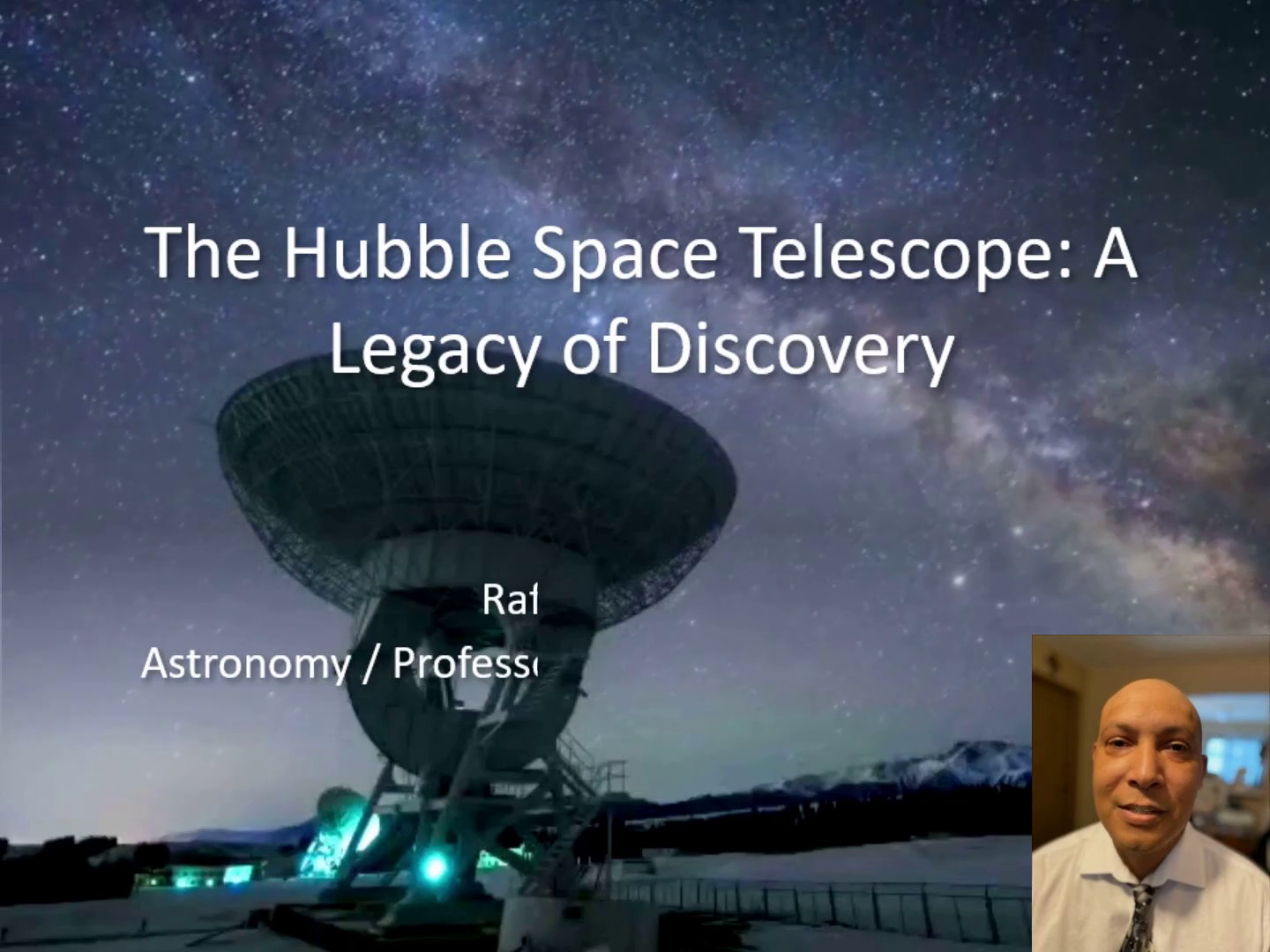Scene 1 (0s)
Satellite Dish At Night. The Hubble Space Telescope: A Legacy of Discovery.
Scene 2 (1m 59s)
History of the Hubble Space Telescope. [image]. Launched April 24, 1990 aboard Space Shuttle Discovery Joint project between NASA & ESA Designed to avoid Earth’s atmosphere distortion Five servicing missions (1993–2009) upgraded instruments.
Scene 3 (3m 22s)
Instruments & Frequency Bands. [image]. Wide Field Camera 3 (WFC3): UV, visible, near-infrared Advanced Camera for Surveys (ACS): Visible light Cosmic Origins Spectrograph (COS): Ultraviolet Near Infrared Camera & Multi-Object Spectrometer (NICMOS) (retired).
Scene 4 (4m 53s)
Major Discoveries. Age of the Universe: ~13.8 billion years Evidence of dark energy (accelerating expansion) First direct images of exoplanet atmospheres Iconic images: Pillars of Creation, AG Carinae, Deep Field surveys.
Scene 5 (6m 3s)
Upgrades & Future Plans. 1993 corrective optics repair New cameras & spectrographs added in later missions Operated alongside James Webb Space Telescope (JWST) Expected to function through the 2030s.
Scene 6 (7m 11s)
Limitations & Constraints. Limited by Earth orbit (cannot see far infrared/radio waves) Costly servicing missions (last one in 2009) Instruments slowly aging Susceptible to hardware failures.
Scene 7 (7m 53s)
Conclusion. Over 1.5 million observations Over 20,000 scientific papers published Changed our understanding of galaxies, stars, and cosmic evolution Legacy: Inspiring future generations of astronomy.
Scene 8 (8m 48s)
Works Cited. NASA. Hubble Space Telescope. NASA, 2023, https://hubblesite.org. European Space Agency. “Hubble Celebrates its 31st Anniversary with a Magnificent View of AG Carinae.” ESA/Hubble, 23 Apr. 2021, https://esahubble.org/images/heic2105a/. “Hubble Space Telescope.” Britannica, 2023, https://www.britannica.com/topic/Hubble-Space-Telescope..
